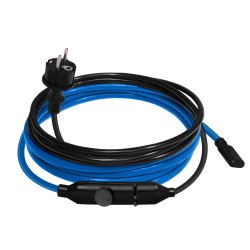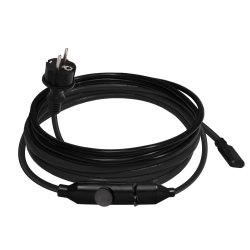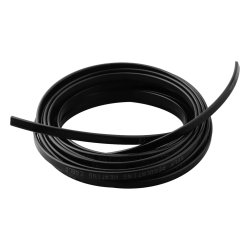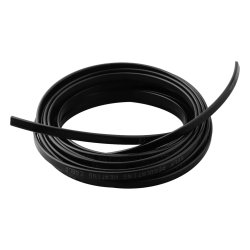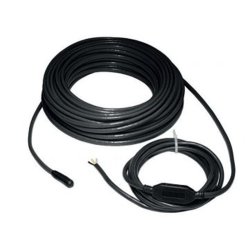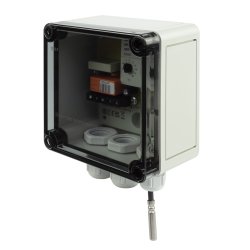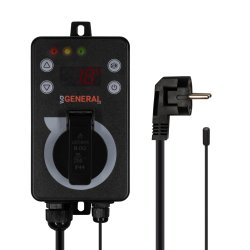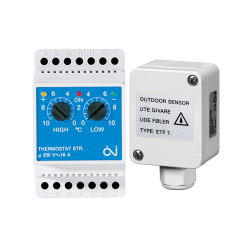Frost protection heating cable: The effective solution for reliable protection against frost damage

Well equipped for the winter: Frost protection made easy
Freezing winters bring with them numerous risks - frozen water pipes, blocked gutters or defective irrigation systems are just some of the possible damages. But what if you could prevent all this? With our frost protection heating cables, we offer you a practical and reliable solution that protects you from unpleasant surprises. In our latest article, we show you how you can effectively protect your home, pet troughs, frost-sensitive plants or outdoor pipes. This way, your installations and systems remain functional even in icy temperatures - and you not only save costs, but also time and nerves.
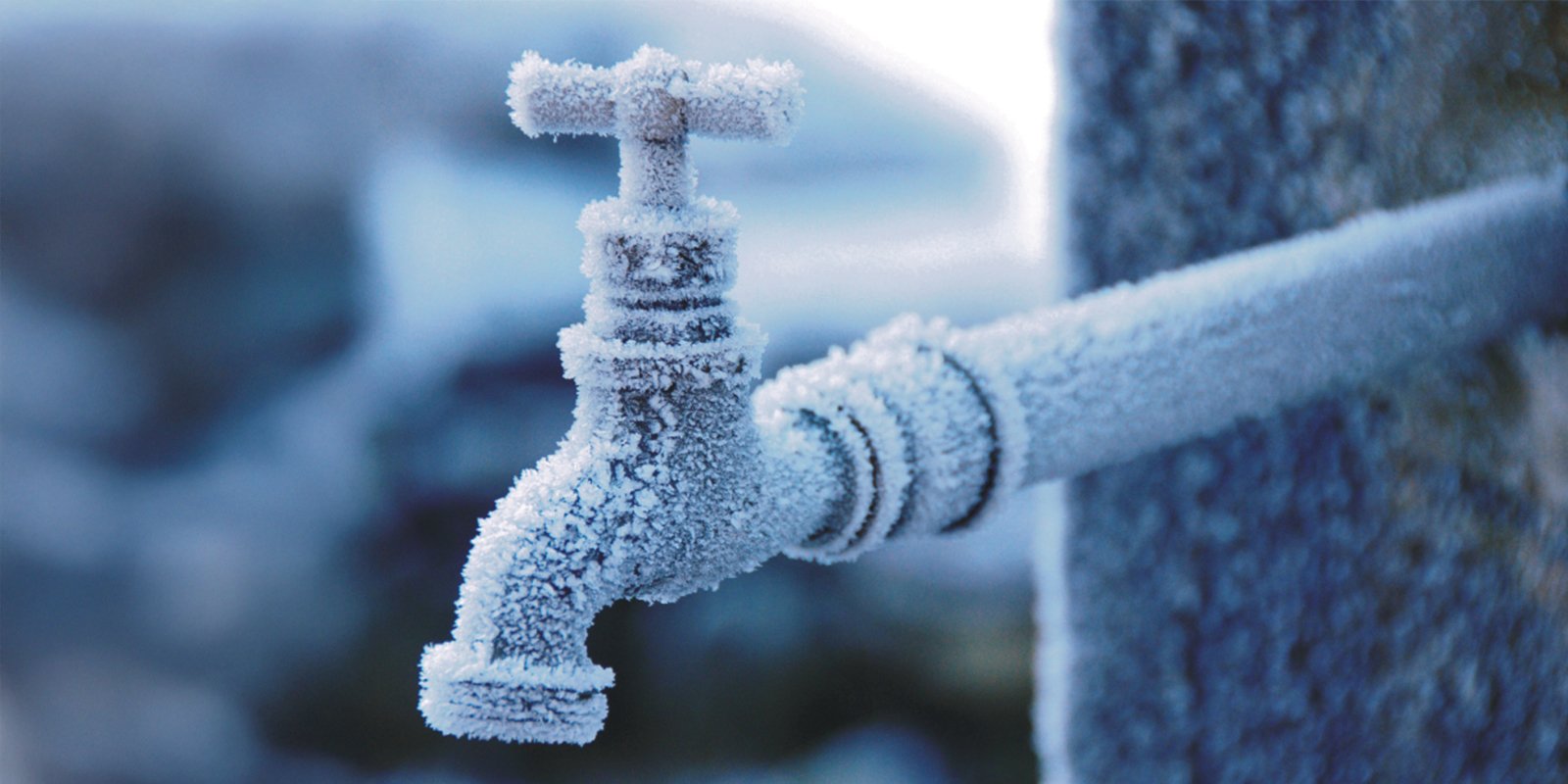
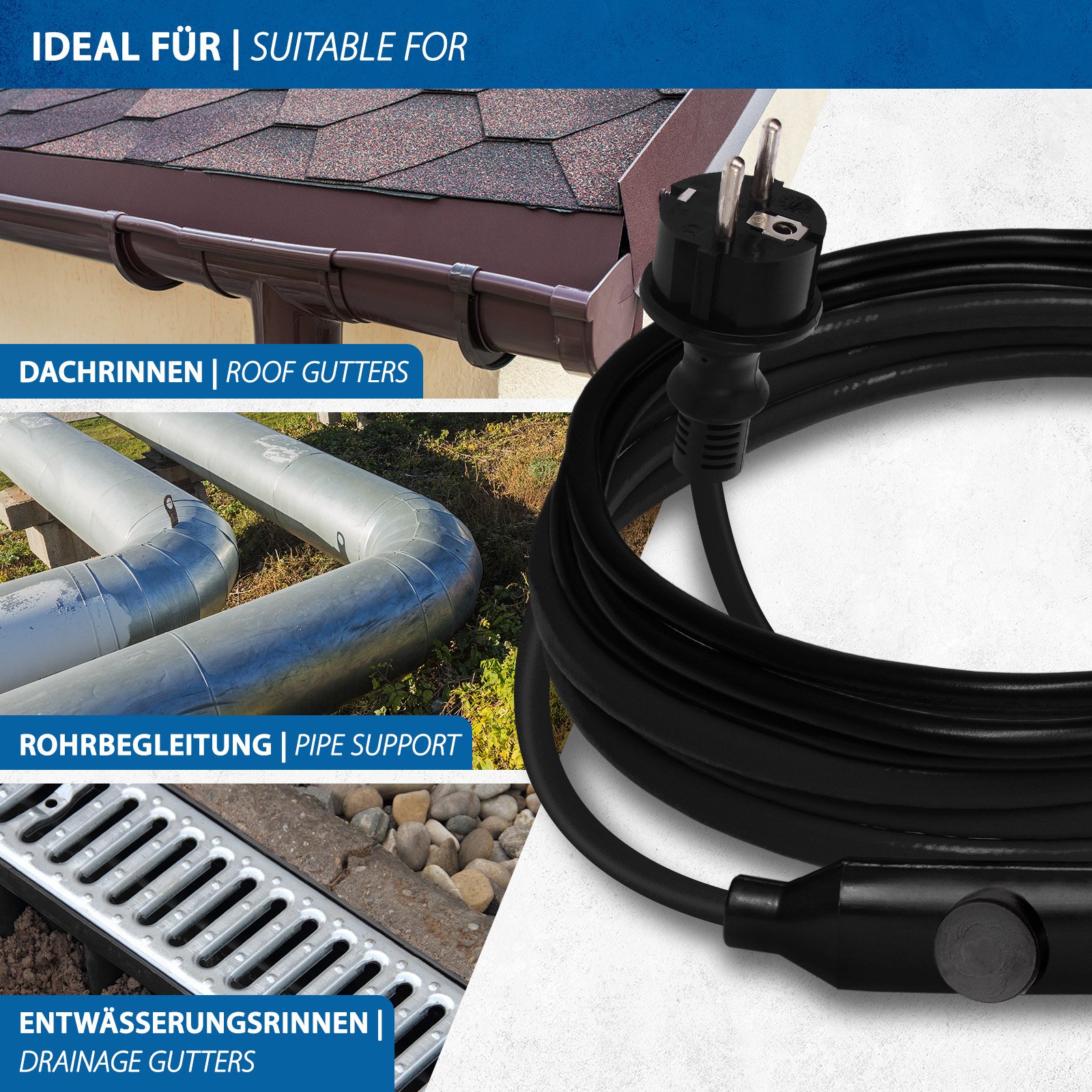
All-rounder: the trace heating offers a wide range of applications
The main area of application for pipe trace heating is frost protection. This is why it is often referred to as a frost protection heating cable.
If, for example, uninsulated heating pipes or water pipes are routed through unheated rooms, there is a risk of freezing in winter. The use of pipe trace heating prevents the pipes from freezing or even bursting at very low temperatures. However, trace heating can also be a good investment for insulated pipes and provide additional safety, especially in particularly cold regions or if the water pipes are used irregularly.
The same naturally also applies to outdoor areas: Outdoor taps, rainwater barrels and cisterns, as well as gutters, downpipes and gutters on driveways can be kept frost-free. The practical heating cable keeps the temperature above freezing at all times, effectively preventing expensive frost damage. This additional frost protection may also be necessary for air-to-water heat pumps if the heating is not used on very cold days. Even swimming pool pipes or pond systems can be protected from frost by using heating cables.
In the commercial sector, trace heating is also frequently used to control the temperature of frost-sensitive containers, such as paints and varnishes. In industrial plants, it can also heat oil pipes to ensure better flow properties of the fossil raw material. Pipe trace heating is also frequently used in agriculture, for example for drinking troughs or water-bearing pipes in stables, to prevent breakdowns due to frost and to ensure operation even at low temperatures.
What are the differences between the various trace heating systems?
The basic principle of pipe trace heating is always the same. There is always an electrical heating conductor inside, which converts the supplied electrical energy into heat (thermal energy). Nowadays, most trace heating systems are designed as so-called twin heating conductors, which enables the power supply from only one side. Earlier models, on the other hand, had to be connected to the power supply at the beginning and end of the heating cable.
However, the main difference lies in the technical design of the heating conductor used. While a conventional heating conductor always heats with the same output regardless of its temperature, a self-regulating heating conductor is able to control its own heating output depending on the temperature. This property is also known as PTC technology (Positive Temperature Coefficient).
The power adjustment of the self-regulating heating conductor is achieved thanks to a special heating matrix in which carbon particles are embedded. These form the current paths between copper parts arranged in parallel. As soon as a supply voltage is applied and the temperature rises, the heating matrix expands. As a result, the embedded carbon particles move further and further apart, interrupting the above-mentioned current paths. As a result, the heating matrix cools down and the carbon particles move closer together again, closing the current paths once more. This physical process allows the self-regulating heating conductor to react continuously to fluctuations in temperature, thus enabling particularly energy-efficient and economical operation.
Thanks to this thermal self-regulation, a heating cable with PTC technology can also be laid crosswise or overlapping without overheating. With a conventional heating cable, on the other hand, care must always be taken to maintain a certain distance so that the heating cable does not overheat.
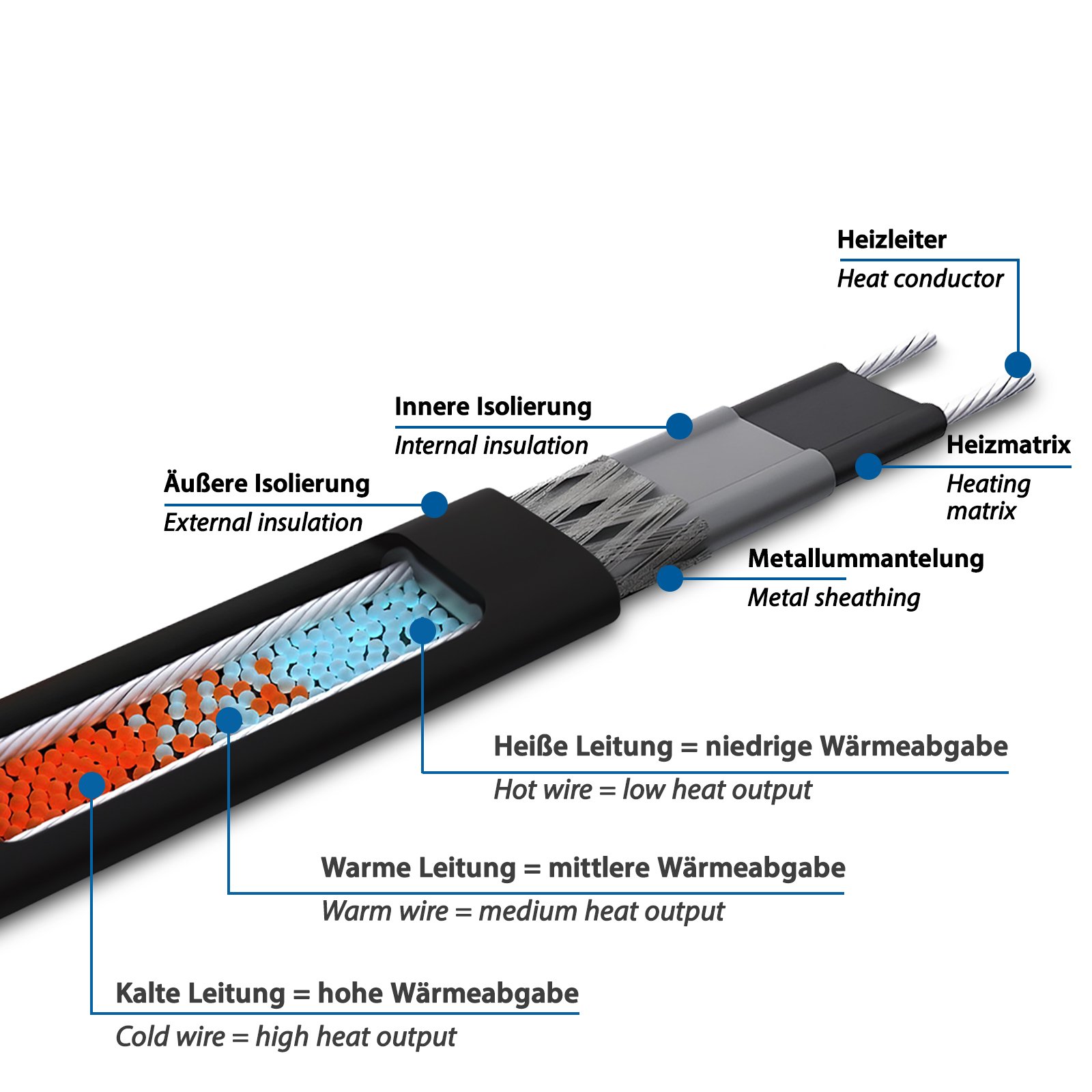
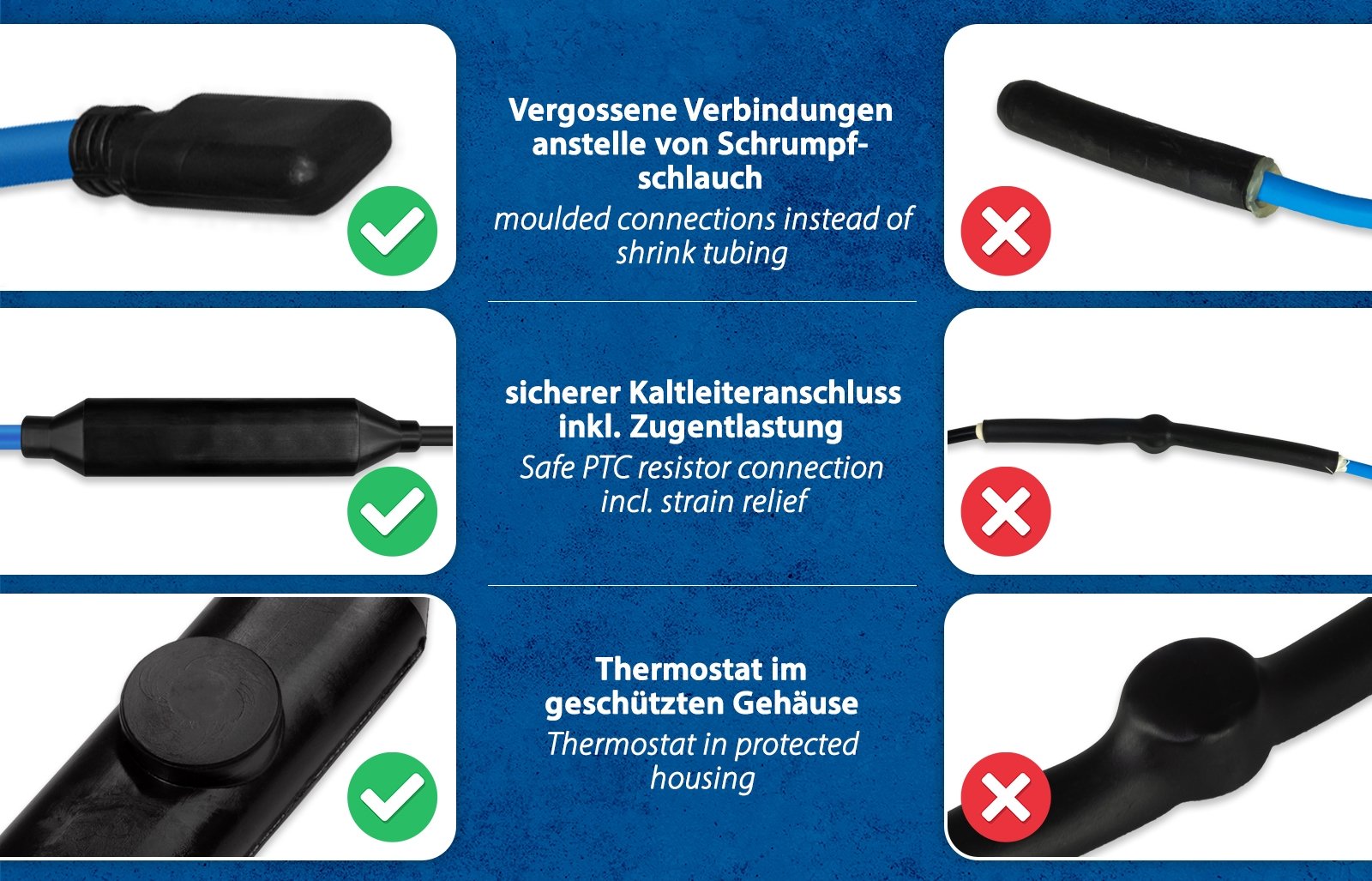
Be careful when choosing heating cables: quality makes all the difference
Caution should be exercised when selecting heating cables, especially if they are offered at conspicuously low prices on some online platforms. These are often products of inferior quality that may seem tempting at first glance, but can cause problems in the long term.
A typical feature of such cheap products is the use of very thin and less robust insulation. This can be damaged more quickly, which not only impairs the functionality of the heating cable, but can also pose a safety risk.
Another weak point is the workmanship of the transitions from the power connection cable to the thermostat or heating conductor. Instead of a stable and reliable seal, only shrink tubing is often used here. However, these do not offer the same durability and resistance as professional solutions, which can be particularly problematic with intensive or long-term use.
We therefore recommend taking a close look when buying heating cables and opting for high-quality products. Solid workmanship and durable materials pay off not only in terms of service life, but also in terms of safety and reliability.
Plug & Play - no specialist required for the power connection
Particularly in the home, pipe trace heating can be easily connected to the power supply via the socket. Our ETM and SPC models are equipped with a type F plug (Schuko plug) for this purpose. An all-round protective conductor fabric in the heating cable ensures maximum operational safety by immediately triggering the RCD in the event of mechanical damage to the trace heating. This makes installation particularly quick and easy and can be carried out without the help of an expensive specialist.
For individual requirements, we also offer our frost protection heating cables by the metre, which you can cut to length yourself. This variant allows maximum flexibility if standard lengths do not fit or special projects are to be realised. Please note, however, that basic electronic knowledge is required to adjust and install the cable safely. A correct connection and the attachment of end terminations are essential to ensure operational safety.
Whether prefabricated solutions or by the metre - our frost protection heating cables offer a reliable and flexible way to efficiently prevent frost-related damage.
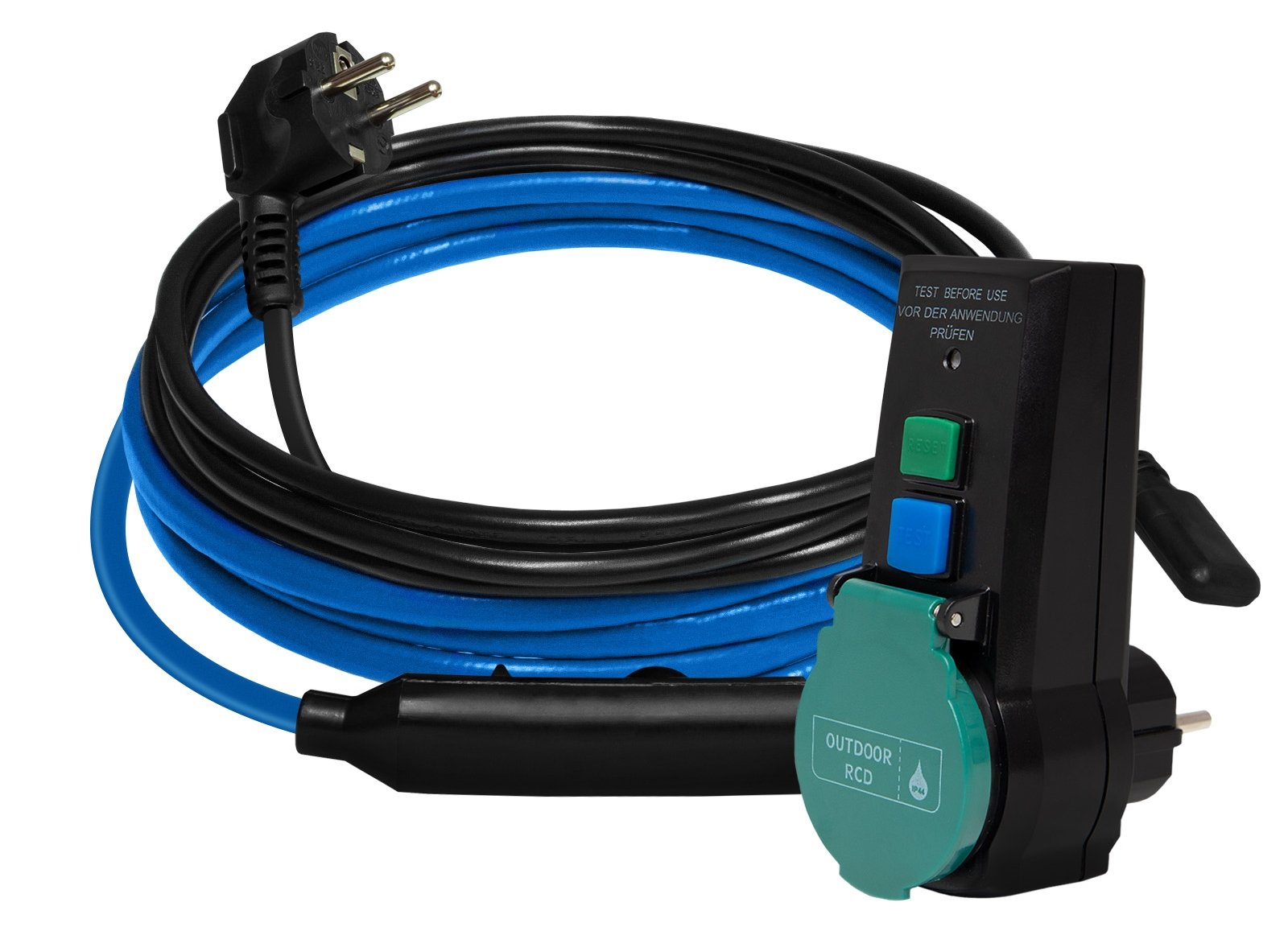
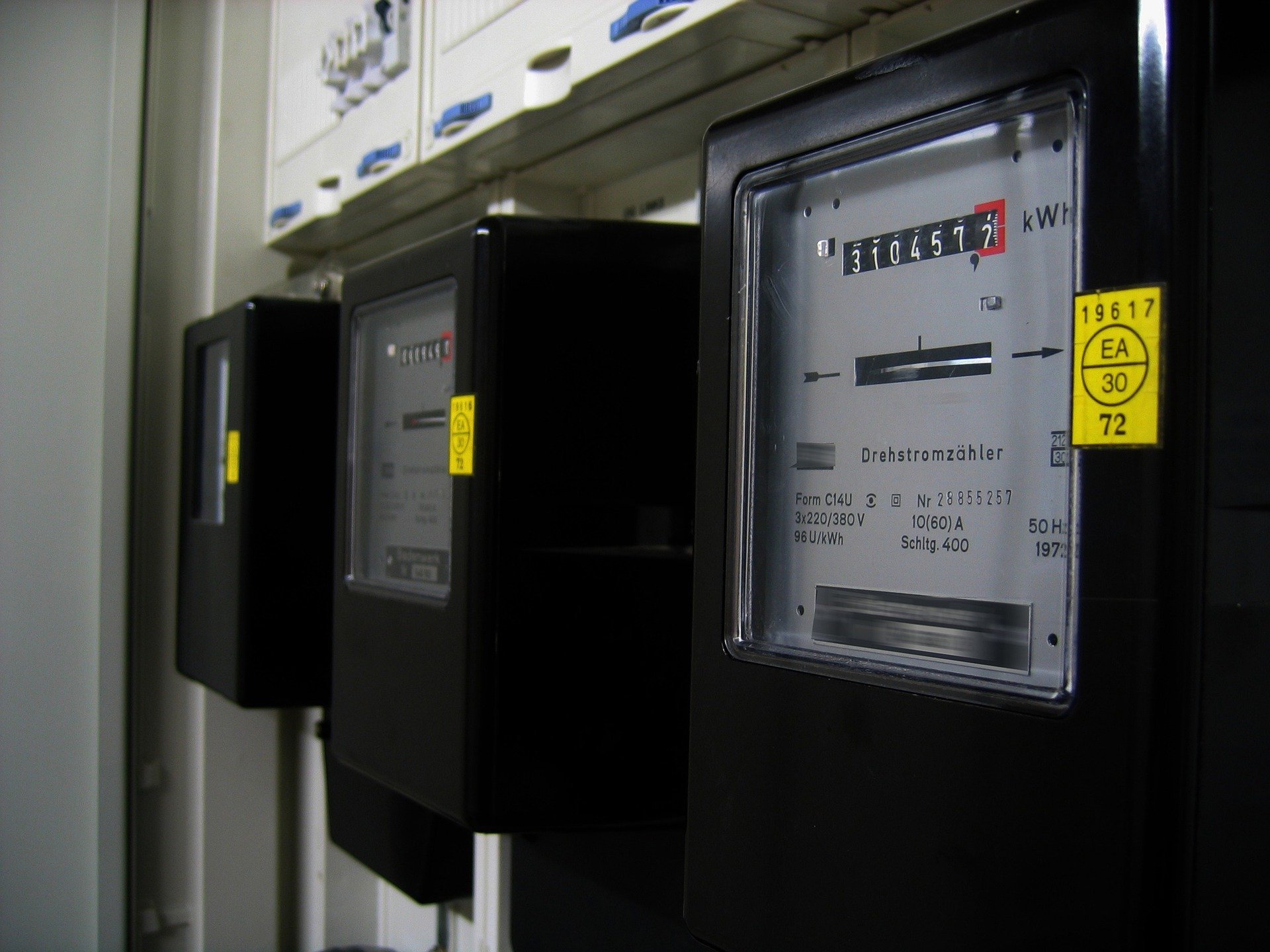
What does a pipe trace heating system cost to purchase and operate?
The cost of pipe trace heating can vary depending on the design, range of functions and heating output. In general, heating cables with an output of 15 to 30 watts per metre usually cost between 5 and 20 euros per metre. Higher-quality models with additional safety functions or special features, such as greater resistance to external influences, can be somewhat more expensive, but often offer a longer service life and greater reliability.
The operating costs of pipe trace heating are also manageable and depend on several factors: the heating output, the length of the cable and the effective service life. An example: A ten metre long pipe trace heating system with an output of 15 watts per metre consumes around 1.5 kilowatt hours in 10 hours. At an average electricity price of currently around 30 cents per kilowatt hour, this results in costs of around 45 cents.
Operating costs can be further optimised through targeted use - for example, only during particularly cold days or with the help of a thermostat that automatically switches the heating on and off as required. In the long term, investing in pipe trace heating is therefore not only effective protection against frost damage, but also an economically sensible measure.
Our product recommendations for reliable frost protection in winter:
Power supply: 230V~
Heat output: 15W/m
Technology: conventional twin heating cable
Overlapping installation possible: no
Connection: Schuko plug (type F)
Thermostat: integrated, on +5 / off +15°C
IP protection class: IP67
UV-resistant: no
Available lengths: 2 to 48m
Power supply: 230V~
Heat output: 15W/m
Technology: self-regulating PTC heating cable
Overlapping installation possible: yes
Connection: Schuko plug (type F)
Thermostat: integrated, on +5°C / off +15°C
IP protection class: IP67
UV-resistant: yes
Available lengths: 2 to 30m
Power supply: 230V~
Heat output: 20W/m
Technology: self-regulating PTC heating cable
Overlapping installation possible: yes
Connection: open cable ends
Thermostat: optional control available
IP protection class: IP67
UV-resistant: yes
Available lengths: By the metre, up to max. 100m
Power supply: 230V~
Heat output: 30W/m
Technology: self-regulating PTC heating cable
Overlapping installation possible: yes
Connection: open cable ends
Thermostat: optional control available
IP protection class: IP67
UV-resistant: yes
Available lengths: By the metre, up to max. 84m
Power supply: 230V~
Heat output: 30W/m
Technology: conventional twin heating cable
Overlapping installation possible: no
Connection: open cable ends
Thermostat: optional control available
IP protection class: IP67
UV-resistant: yes
Available lengths: 16 to 112m
Power supply: 230V~
Switching capacity: 3680W/16A
Connection: Screw connection
Control type: Two-point control on/off
Sensor: external, NTC 12kOhm
Setting range: -20°C to +20°C
IP protection class: IP65
UV-resistant: yes
Power supply: 230V~
Switching capacity: 3680W/16A
Connection: Schuko plug
Control type: Two-point control on/off
Sensor: external, NTC 10kOhm
Setting range: -50°C to +99°C
IP protection class: IPX4
UV-resistant: yes
Power supply: 230V~
Switching capacity: 3680W/16A
Connection: Screw connection
Control type: Two-point control on/off
Sensor: external, ETF-744
Setting range: 0°C to +10°C
IP protection class: IP65 (sensor only)
UV-resistant: yes (sensor only)

Tip: Bring frost-sensitive plants safely through the winter
Heating cables are also a simple and effective solution for protecting frost-sensitive plants from cold damage. Simply wrap the heating cable around the planters or directly around the root balls of the plants. In combination with an additional thermal fleece cover (plant protection cover), you can create optimum conditions for safe overwintering.
Some plants, such as olive trees, hemp palms, banana plants and almond trees, are considered partially hardy and often only tolerate frost down to around -10 °C. If these plants are additionally protected by carefully wrapping the heating cable around the trunk, they can survive much lower temperatures without damage.
This method ensures that your sensitive garden treasures remain healthy even in winter and will shine again in all their splendour next spring.
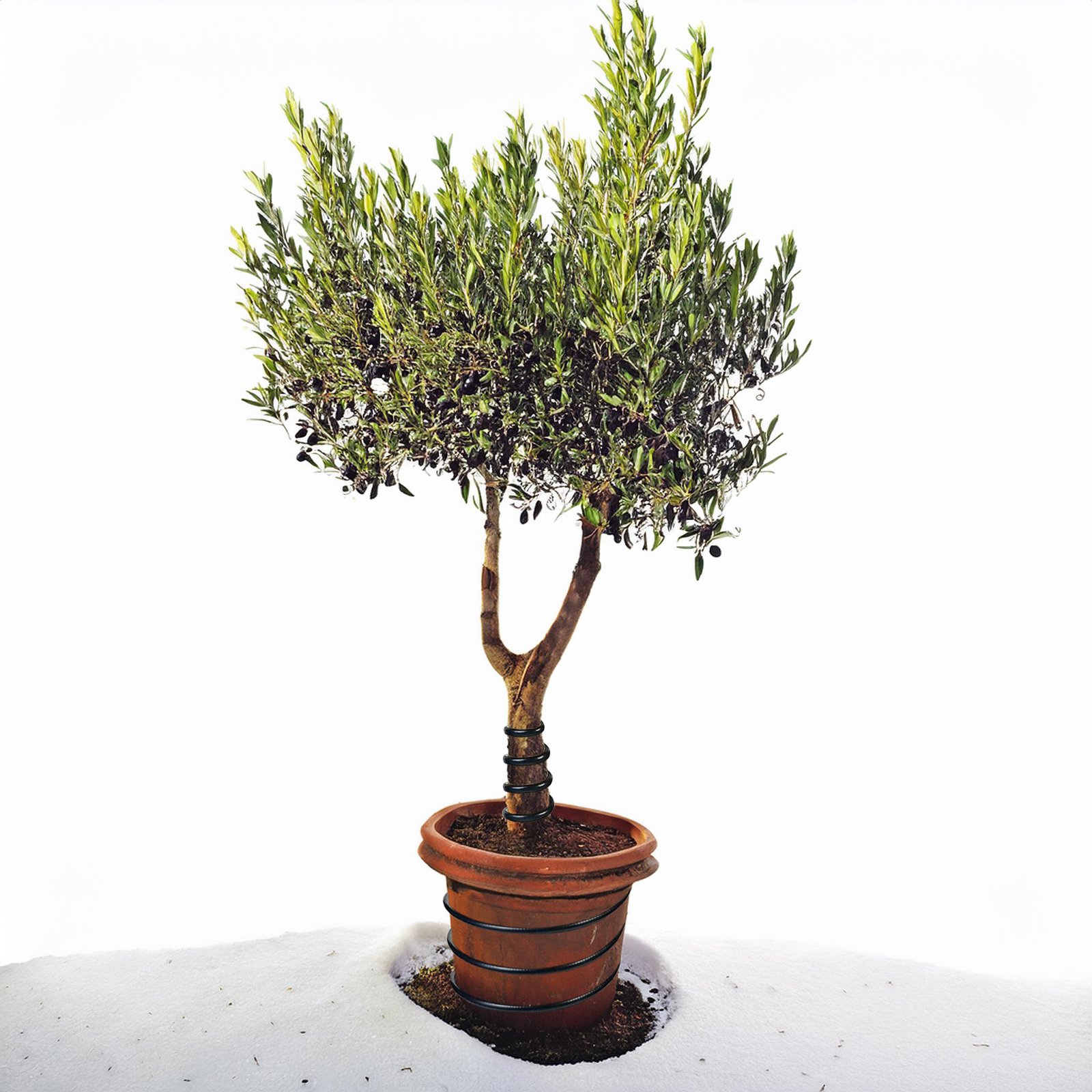
Do you need help choosing the right heating system?
We offer you detailed descriptions of all products, numerous pictures with real applications as well as manuals and operating instructions - all directly with the product. Our competent service team is also on hand to provide you with advice and assistance at all times. Don't hesitate and contact us now!


 Deutsch
Deutsch
